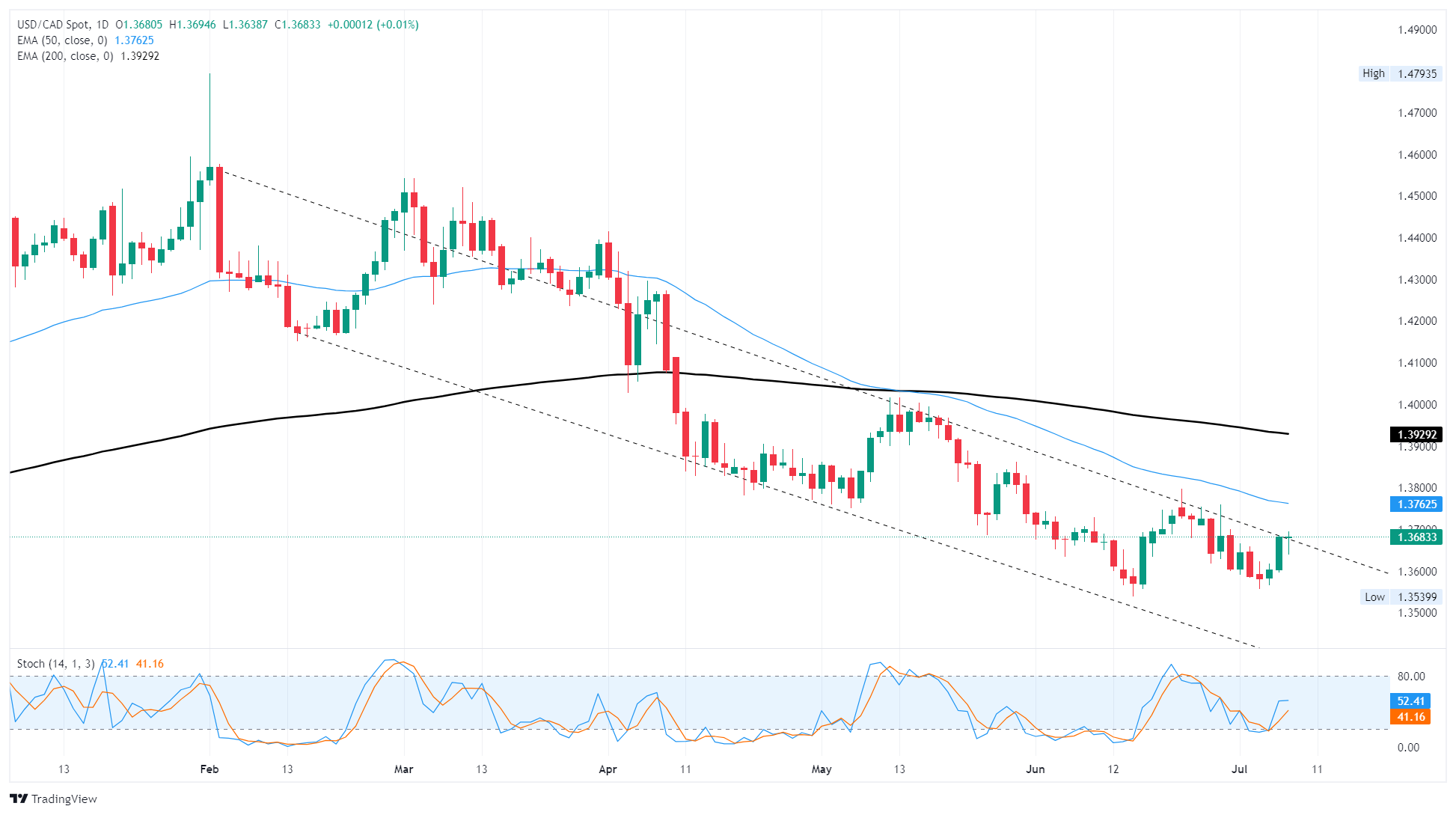Canadian Dollar corkscrews as market sentiment roils on fresh tariff threats
- The Canadian Dollar held flat against the US Dollar on Tuesday, but volatility remains.
- The Loonie briefly gained ground against the Greenback before falling back to opening bids.
- Tariff talk remains the key ingredient in market sentiment this week amid mid-tier data releases.
The Canadian Dollar (CAD) struggled on Tuesday, briefly gaining ground against the US Dollar (USD). Risk-off flows returned to the forefront and kicked the Loonie back into the day’s opening bids just below 1.3700.
Tariff talk is back on top of the market headlines pile. Early this week, the Trump administration kicked the can down the road on its own self-imposed deadline to enact reciprocal tariffs that were announced in early April and then immediately delayed to July 9. The Trump team has now delayed the already-delayed tariffs to August 1, with President Donald Trump insisting that now, this time, there won’t be any further delays, and also added further tariff threats to the pile of import taxes that may or may not loom ahead.
Daily digest market movers: Canadian Dollar struggles to find gains amid rising risk aversion
- The Canadian Dollar remains on the low side of near-term market action as risk-off flows bolster the Greenback.
- The US Dollar’s ongoing downtrend against the Loonie could be nearing its end as investors and business operators both begin to buckle under the weight of an amorphous trade outlook.
- President Trump has announced double-digit tariff increases against a handful of countries, including South Korea and Japan, to take effect on August 1.
- President Trump also announced a 50% tariff on all copper imports to match already-standing steel and aluminum tariffs.
- Despite announcing that the copper tariffs would begin “today”, nobody is aware of whether or not that will actually come to pass.
Canadian Dollar price forecast
Despite holding below a descending trendline near 1.3700, USD/CAD is beginning to tilt toward the high side. Daily candlesticks are poised to mark in a double bottom chart pattern, signaling that a long-term turnaround in ongoing Greenback weakness could be approaching over the horizon.
USD/CAD daily chart

Canadian Dollar FAQs
The key factors driving the Canadian Dollar (CAD) are the level of interest rates set by the Bank of Canada (BoC), the price of Oil, Canada’s largest export, the health of its economy, inflation and the Trade Balance, which is the difference between the value of Canada’s exports versus its imports. Other factors include market sentiment – whether investors are taking on more risky assets (risk-on) or seeking safe-havens (risk-off) – with risk-on being CAD-positive. As its largest trading partner, the health of the US economy is also a key factor influencing the Canadian Dollar.
The Bank of Canada (BoC) has a significant influence on the Canadian Dollar by setting the level of interest rates that banks can lend to one another. This influences the level of interest rates for everyone. The main goal of the BoC is to maintain inflation at 1-3% by adjusting interest rates up or down. Relatively higher interest rates tend to be positive for the CAD. The Bank of Canada can also use quantitative easing and tightening to influence credit conditions, with the former CAD-negative and the latter CAD-positive.
The price of Oil is a key factor impacting the value of the Canadian Dollar. Petroleum is Canada’s biggest export, so Oil price tends to have an immediate impact on the CAD value. Generally, if Oil price rises CAD also goes up, as aggregate demand for the currency increases. The opposite is the case if the price of Oil falls. Higher Oil prices also tend to result in a greater likelihood of a positive Trade Balance, which is also supportive of the CAD.
While inflation had always traditionally been thought of as a negative factor for a currency since it lowers the value of money, the opposite has actually been the case in modern times with the relaxation of cross-border capital controls. Higher inflation tends to lead central banks to put up interest rates which attracts more capital inflows from global investors seeking a lucrative place to keep their money. This increases demand for the local currency, which in Canada’s case is the Canadian Dollar.
Macroeconomic data releases gauge the health of the economy and can have an impact on the Canadian Dollar. Indicators such as GDP, Manufacturing and Services PMIs, employment, and consumer sentiment surveys can all influence the direction of the CAD. A strong economy is good for the Canadian Dollar. Not only does it attract more foreign investment but it may encourage the Bank of Canada to put up interest rates, leading to a stronger currency. If economic data is weak, however, the CAD is likely to fall.
